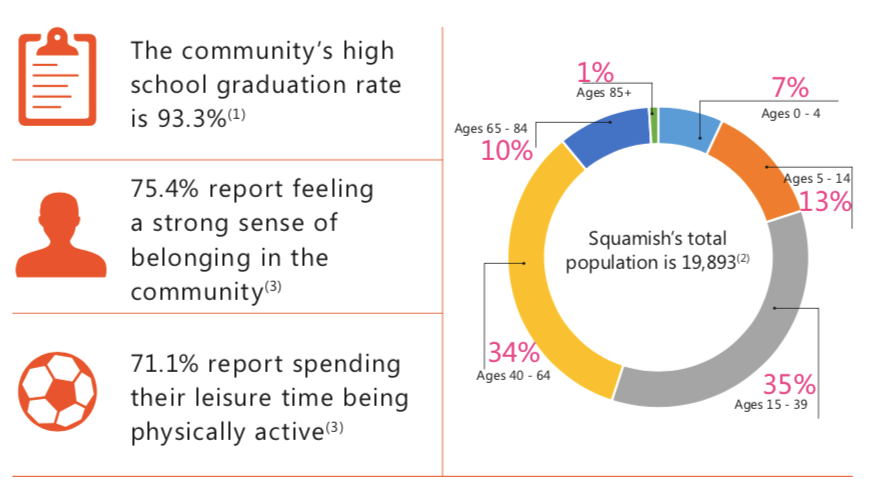If Squamish were a patient, it would be diagnosed healthy-overall, but have some worrisome conditions that need to be addressed — stat.
The 2017 Vital Signs report focuses on 11 indicators of quality of life and uses federally collected data combined with local resources to assess those qualities.
It is the third such report from the Squamish Community Foundation, which distributes funds to registered charities for community projects.
“The ultimate goal [of the report] is, here is where we are doing well, let’s celebrate it and here is where we are not and so let’s use this report to direct our actions and resources moving forward to improve those quality of life indicators,” explained Ashley Oakes, the Squamish Community Foundation’s manager.

On the plus side of the health ledger, 75 per cent of Squamish residents polled self-report feeling a strong sense of belonging in the community.
More than 70 per cent also report spending their leisure time being physically active. Our overall high school graduation rate hovers at about 93 per cent. Indigenous graduation rates, in particular, have improved. In 2016/17, the school district reported an Indigenous graduation rate of 82 per cent, up from 60.8 per cent in 2011/12.
It won’t be a surprise to many who live in the district that the recently released report shows that housing affordability and the gap between rich and poor are problems in Squamish.
The report notes that 2017 home assessment prices were up 10 per cent over 2016 and rental rates have increased by more than 30 per cent since 2014.
The rental vacancy rate remains at zero.
“Squamish is facing a housing affordability crisis,” the report reads.
It notes there are 306 listings on Airbnb between Britannia Beach and Paradise Valley.
The suicide rates in the corridor are also an alarming note in the report that stood out to Oakes.
“They were shocking,” she said.
Suicides are increasing and are the leading cause of injury deaths in the region. The suicide rate in the corridor from 2009 to 2015 was 11 per cent higher than the B.C. rate of 11.3 per 100,000. Death rates from suicide were highest for males aged 60 to 64. Hospitalization rates from attempted suicide were highest for female youth between 15 to 19 years.
“So, that is an area we want to see how we can help the community make improvements,” said Oakes, “whether that is through the establishment of funds to support mental health work in the community or through our granting to organizations already working in this area.”
Also troubling, 69 per cent of the unintentional poisoning deaths in the region in the last six years were from narcotic overdoses.
Another stat highlighted in the Vital Signs report is the increase in injuries from recreational activities.
“Thirty-one per cent of all acute injury hospitalizations in the region over the six years from 2008 were sport and recreation-related, with 43 per cent resulting from ski and snowboard injuries, and 29 per cent from cycling injuries occurring on and off the road,” reads the report.
With more and more people recreating in Squamish, our Search and Rescue is also busier than ever. In 2017, Squamish Search and Rescue responded to 95 tasks, up from 81 in 2013, making it one of the most active in B.C.
Helicopter rescues (HETS) missions increased from an average of 5.6 per year before 2013 to 13 in 2017.
Oakes said the report could serve as “a roadmap” for individuals or groups who are looking to invest locally in projects where their money will make the most difference.
Businesses and the municipality can also use the report as a resource for decision-making.
“There are all different ways this report can give an individual, a non-profit or business some direction and an overview of the community as a whole,” she said.
To read the full report, go to www.squamishfoundation.ca.




